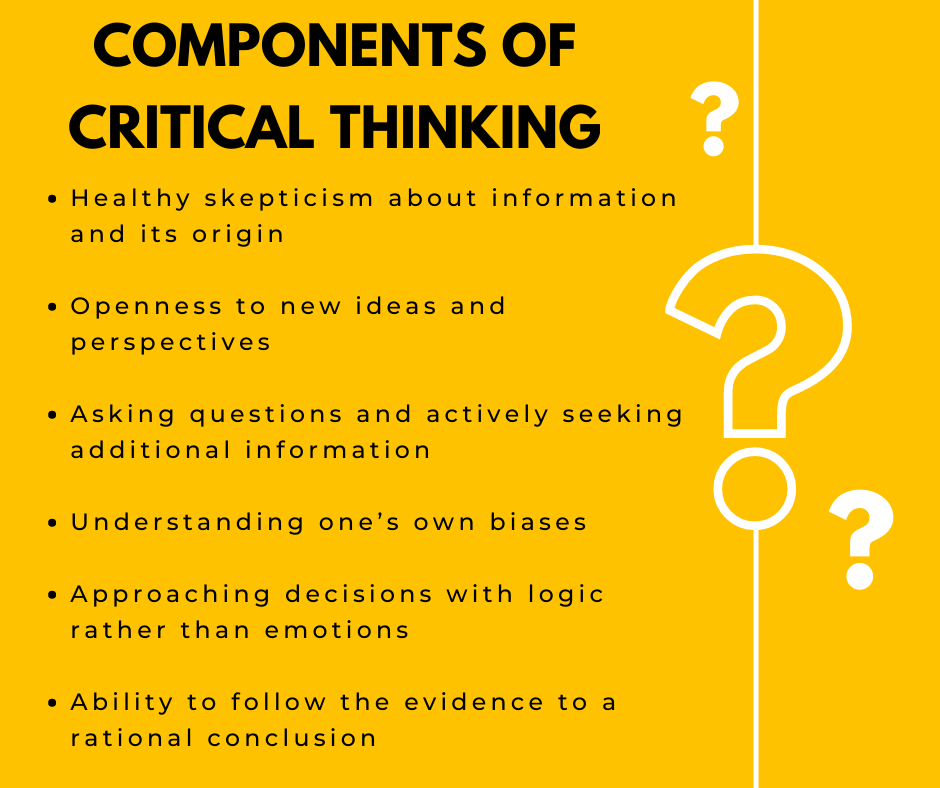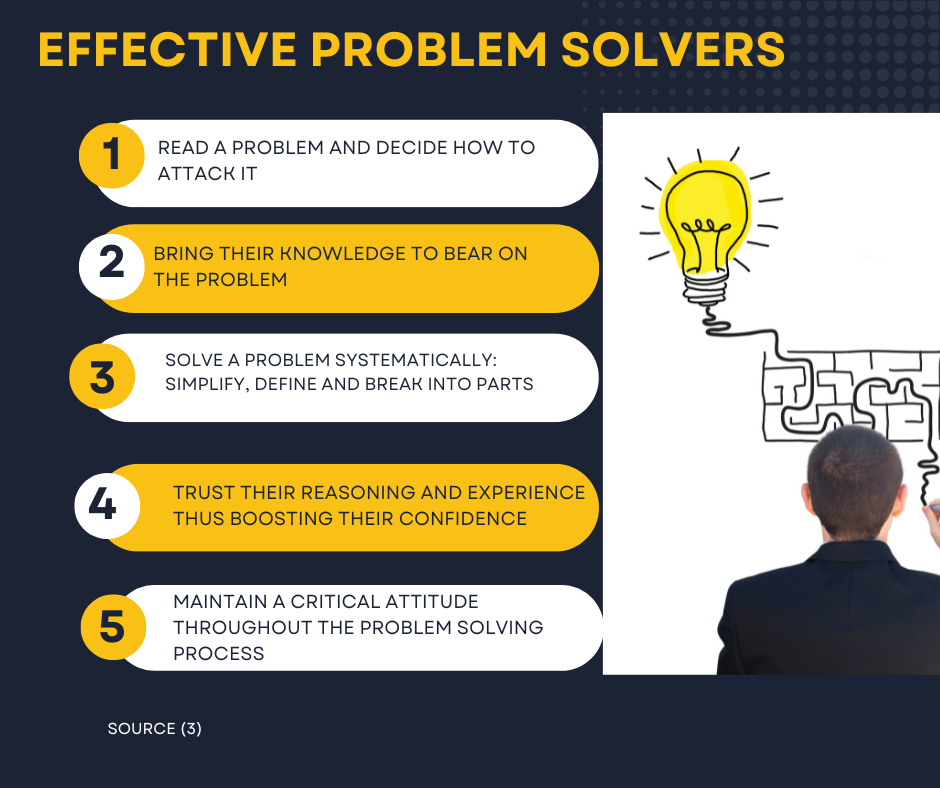Learning Soft Skills - Critical Thinking

Do you:
- understand that most situations have nuance and complexity that need consideration?
- seek information that challenges your beliefs?
- want to know the deeper intricacies of the answers you get or give?
If the answers to these questions are "yes", you are most likely a critical thinker and can find validity in multiple points of view.
After communication, critical thinking is another skill we are going to explore a bit deeper in the series of articles on soft skills.
Other articles bring tips on developing skills in:
In this article:
What Is Critical Thinking?
Every day, we make many decisions based on the information we obtain, previous experiences, and existing knowledge. This means that we are not born with the ability to think critically. Instead, we develop our critical thinking skills as we gain knowledge and experience. This gives us tools to make more sound judgments about what to believe or what action to take. To make these judgements, we often rely on several heuristics (i.e., mental shortcuts) that ease reasoning processes (1). Some decisions—like what to have for breakfast—are relatively simple, but others require a bit more effort. That's where critical thinking comes in. And speaking of breakfast, one study (2) suggests that more than 221 daily decisions are related to food.
So, what is critical thinking?
Here are a few definitions that might explain this concept:
- The art of thinking about thinking (3)
- Critical thinking is a mode of thinking about any subject, content or problem in which the thinker improves the quality of their thinking by skillfully analysing, assessing and reconstructing it (4)
- Critical thinking is purposeful, self-regulatory judgment which results in interpretation, analysis, evaluation, and inference, as well as an explanation of the evidential, conceptual, methodological, or contextual considerations upon which that judgment is based (5).
As you can see, the result of critical thinking is making decisions and inferences.
Some internet sources suggest that the average person makes around 35,000 choices per day. However, none of these sources lists actual research or a study that came to this number. At least, I haven't found one. If you do, feel free to reach out and share your findings. And here is one of the components of critical thinking: healthy scepticism about information and its origin.

Benefits of Critical Thinking
Critical thinking means reviewing the ideas produced, deciding what action will best solve the problem or what belief about the issue is most reasonable, and then evaluating and refining that solution or belief (3). We could say that this process helps us find the best solutions to problems.

How to Think Critically?
First of all, no one is a critical thinker through and through, but only to such and such a degree because we are subject to episodes of undisciplined or irrational thought. This means that developing critical thinking skills is a life-long process.
Whether you know it or not, when you think critically, you engage in a multi-step process. Sometimes, this process is automatic - like deciding what to put in the breakfast smoothie you have almost every morning.
Other times, it's necessary to be more thorough through each step.
Steps of the Critical Thinking Process
Developing your critical-thinking skills is essential to your personal and professional success. Now that you know what critical thinking is and why it's beneficial to you, let's focus on how best to develop this skill.
Step 1: Identify the Problem
It's essential to understand the situation clearly. Your first thought might be that this goes without saying, but we can easily rush to judgment or action before we understand what an issue actually is. Here are a few questions that can help you identify the problem:
- What is the situation as I understand it?
- Am I biased? Are there any underlying assumptions?
- Is this the real problem, or is it part of a larger one?
Step 2: Gather Relevant Data
Next, it's time to gather data. Look for information that will help you make your decision or solve your problem. Sometimes, the data we need is a part of our previous experiences and existing knowledge. Other times, we have to research external sources - from other people's opinions to the results of scientific studies.
But remember that not everything we read on the Internet is true, which is why we have to take the next step.
Step 3: Analyse Your Findings
Now that you have the data start reading and understanding the information you have collected. Here are a few steps that can guide you in this stage:
- Is this information provable, or is it someone's opinion? Is there bias present?
- Is the source trustworthy?
- How old is this information? Is there a new best practice to consider?
Step 4: Determine What's Most Important
In the next step, figure out what information is most vital for you to consider in the current situation. Sometimes, we can't see the forest for the trees. What can help is to remove data points that have no relevance.
Step 5: Consider Various Points of View
At this stage, it's essential to stop and consider other points of view.
Try out these two approaches:
- Think about your solution from an opposing perspective and try to poke holes in it. What would my colleague think about this solution? Does this make sense to my partner?
- Ask your team, advisors, partner, or friends if they have different points of view.
This is an excellent time to include the team in finding the best solution and allow you to help your team develop their critical-thinking skills.
Step 6: Draw (And Share) Your Conclusions
Communicating findings—and the process used to arrive at your conclusion—is a critical part of the process. This step is also a great opportunity to work on your communication skills. Failing to effectively communicate a solution to a problem may cause:
- Misunderstandings or confusion (and new problems, as a result)
- Hurt feelings, especially if people feel their points of view were not considered
Step 7: Reflect on the Process
Finally, ask yourself:
- What went well in this decision-making process?
- What was the most challenging part of the process - finding reliable sources? Accepting my own biases? Identifying assumptions? Accepting others' opinions?
- What areas of the process should I improve?
- What will I do the same next time? What will I do differently?
Summary
In short, the ability to think critically is the skill of exploring and evaluating data for a practical approach to understanding the data, then making decisions and determining what to believe and how to act. Developing these skills is a life-long process that includes several steps.
Key Takeaways
- Critical thinkers are made, not born.
- Developing critical thinking skills is a life-long process.
- Sharpening your critical thinking skills can benefit you in various ways.
- The willingness to explore multiple points of view is a trait of critical thinkers.
- Critical thinking is the ability to gather and analyse information.
- You can start building critical thinking habits right now!
Suggested reading on the topic:
(1) Tversky, A., & Kahneman, D. (1974). Judgment under uncertainty: Heuristics and biases. Science, 185, 1124–1131. https://doi.org/10.1126/science.185.4157.1124
(2) Wansink, B., & Sobal, J. (2007). Mindless Eating: The 200 Daily Food Decisions We Overlook. Environment and Behavior, 39(1), 106–123. https://doi.org/10.1177/0013916506295573
(3) Ruggiero, V. R. (2012). The art of thinking: A guide to critical and creative thought (10th ed.). New York, NY: Longman.
(4) Elder, P.R., & Elder, L. (2008). The thinker's guide for conscientious citizens on how to detect media bias & propaganda in national and world news. Dillon Beach: CA: Foundation for Critical Thinking Press.
(5) Facione, P. A. (2013). Critical thinking: What it is and why it counts. Millbrae, CA: Measured Reason and the California Academic Press



